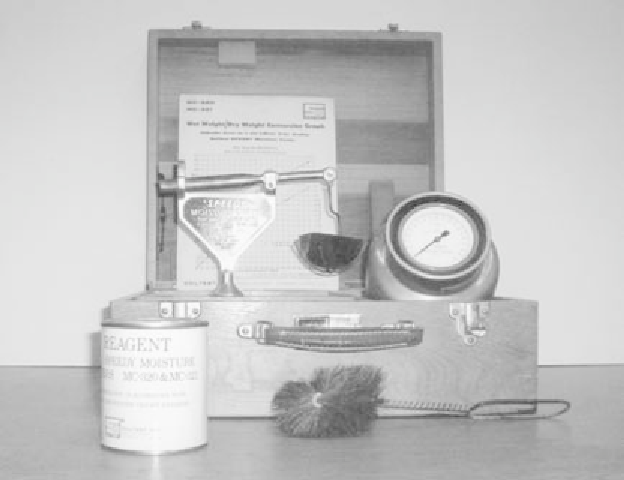Geology Reference
In-Depth Information
Figure 13-1
Speedy Moisture Tester
(3) Attempts to test excessively wet soils or improper use of the
equipment, such as adding water to the testing chamber, could
cause pressures to exceed the safe level for the apparatus. This
may cause damage to the equipment and an unsafe condition for
the operator.
(4) Care should be taken not to dispose of or place a significant
amount of the calcium carbide reagent where it may contact water
because it will produce an explosive gas.
(1) The manufacturer-supplied equipment set, including the test-
ing chamber with attached gage and the balance scales, are cali-
brated as a unit and paired together for the testing procedure.
CALIBRATION [1]
(2) Calibration curves must be developed for each equipment set us-
ing the general soil types to be tested and the expected water content
range of the soil. As new materials are introduced, further calibration
is needed to extend the curve data for the specific instrument. If tests
are made over a long period of time on the same soil, a new calibra-
tion curve should be made periodically, not exceeding 12 months. Be-
fore a new batch of reagent is used for testing, two checkpoints shall
be compared to the existing curve. If variation is exceeded by more
than 1.0% of moisture, a new calibration curve shall be established.
(3) Calibration curves are produced by selecting several samples
representing the range of soil materials to be tested and having a
relatively wide range of water content. Each sample is carefully
divided into two specimens by quartering procedures or use of a
sample splitter. Taking care to not lose any moisture, one specimen
is tested in accordance with the procedure of this test method [see




Search WWH ::

Custom Search